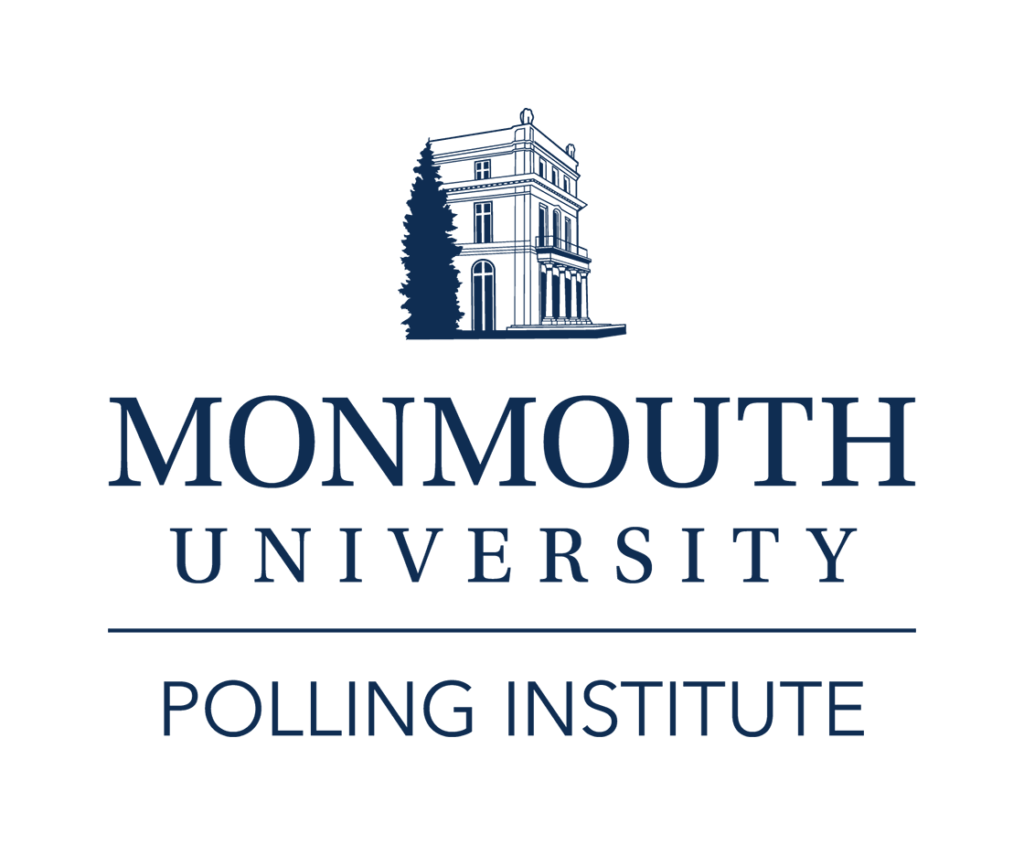On the eve of Governor Jon Corzine’s speech on how the state will address the international financial situation, the Monmouth University/Gannett New Jersey Poll finds New Jerseyans had already identified many serious problems prior to this crisis. The poll also asked Garden State residents whether the fundamentals of how state government operates are up to the task. The verdict? They’re not.
Only 1-in-10 New Jerseyans (10%) feel that the structure of their government, including both state and local government, works well enough as it is now. The overwhelming majority feel it needs to be improved. Moreover, nearly two-thirds (64%) of the state say these improvements require a major overhaul. Another 21% feel New Jersey government can be fixed with just minor improvements.
“The vast majority of New Jerseyans have come to the conclusion that the government in Trenton is broken,” said Patrick Murray, director of the Monmouth University Polling Institute.
The poll also asked residents to rank 14 policy areas on a 10 point scale ranging from not a problem at all to being an extremely serious problem. All 14 policy issues average higher than 5.5 on the 10 point scale, indicating that most Garden State residents consider each to be at least something of a problem. However, New Jerseyans were easily able to prioritize the top issues that need to be tackled.
The clear number one state issue on residents’ minds is property taxes. Fully 80% score this near the top of the problem scale, earning property taxes an average score of 8.7 out of 10. Following closely on the heels of this issue are cost of living (average=8.4), wasteful government spending (8.3), and health care costs (8.1). At least two-thirds of residents score these items an 8, 9, or 10 on the problem scale.
|
How serious are these problems? (on a 10 point scale) | ||
| Tier 1: |
Property taxes | |
| Tier 2: |
Cost of living | |
|
Wasteful government spending | ||
|
Health care costs | ||
| Tier 3: |
Political corruption | |
| Tier 4: |
Over-development and sprawl | |
|
Attracting businesses to the state | ||
|
State worker pensions | ||
|
Crime | ||
| Tier 5: |
Protecting the environment | |
|
The number of school districts | ||
|
Providing services for those in need | ||
|
The quality of public schools | ||
|
The number of municipal governments | ||
Standing alone in the next tier of serious issues is government corruption. More than half give this issue a score of 8, 9, or 10, for an overall average of 7.7. Next on the list are over-development and sprawl (average=7.1), attracting businesses to the state (6.7), state worker pensions (6.7), and crime (6.6).
Rounding out the list of problems, although not seen as quite so serious, are environmental protection (6.2), the number of school districts (6.1), providing social services (6.0), the quality of public schools (5.9), and the number of municipalities (5.7).
“Although the poll was conducted before passage of the financial rescue plan and resulting stock market volatility, it is clear that New Jerseyans had already placed cost of living issues at the top of their list of state priorities,” said Murray. “Unfortunately, most appear to doubt that much will be accomplished without a major shake-up of how state government operates.”
The poll also found that nearly 2-in-3 (64%) residents feel the Garden State is on the wrong track. This is up from 55% who felt that way in a February 2007 poll. Just 26% say the state is headed in the right direction.
These poll results and other issues facing the state will be highlighted at Leadership New Jersey’s Forum for the Future in Trenton on October 15.
The Monmouth University/Gannett New Jersey Poll was conducted by telephone with 808 New Jersey adults from September 11 to 14, 2008. This sample has a margin of error of ± 3.5 percent. The poll was conducted by the Monmouth University Polling Institute and originally published by the Gannett New Jersey newspaper group (Asbury Park Press, Courier-Post, Courier News, Daily Journal, Daily Record, and Home News Tribune).
DATA TABLES
The questions referred to in this release are as follows:
(* Some columns may not add to 100% due to rounding.)
undefined. Would you say things in New Jersey are going in the right direction, or have they gotten off on the wrong track?
|
TOTAL | REG VOTER |
PARTY ID | ||||||
|
Yes | No | Dem | Ind |
Rep | ||||
| Right direction | 26% | 26% | 25% | 40% | 23% | 10% | ||
| Wrong track | 64% | 64% | 63% | 49% | 70% | 81% | ||
| (VOL) Depends | 4% | 4% | 3% | 6% | 4% | 1% | ||
| (VOL) Don’t know | 6% | 5% | 9% | 5% | 3% | 8% | ||
| Unwtd N |
808 | 709 | 99 | 300 | 291 |
187 | ||
| TREND: | Sept 2008 | Feb 2007 | Sept 2006 | April 2006 | Sept 2005 |
| Right direction | 26% | 34% | 29% | 30% | 31% |
| Wrong track | 64% | 55% | 58% | 55% | 54% |
| (VOL) Depends | 4% | 6% | 6% | 9% | 5% |
| (VOL) Don’t know | 6% | 6% | 7% | 6% | 10% |
| Unwtd N |
808 | 801 | 800 | 803 |
800 |
2. I’m going to read you a list of issues facing the state, for each one I read please tell me how much of a problem it is on a scale from 1 to 10 – “1” means it is not a problem at all and “10” means it is an extremely serious problem. You may use any number between 1 and 10. How much of a problem is [READ ITEM] in New Jersey? [ITEMS WERE ROTATED] [The following items were asked of a random half-sample: moe= ± 4.9%]
[READ PERCENTAGES ACROSS ROWS FOR THIS TABLE]
|
Not a problem <<<>>>Extremely serious | |||||||
|
1-3 | 4-7 | 8-10 | DK |
Average | |||
| Property taxes | 3% | 15% | 80% | 2% |
8.7 | ||
| The cost of living | 5% | 20% | 73% | 1% |
8.4 | ||
| Wasteful government spending | 3% | 26% | 66% | 4% |
8.3 | ||
| Health care costs | 5% | 24% | 66% | 4% |
8.1 | ||
| Political corruption | 6% | 32% | 56% | 5% |
7.7 | ||
| Over-development and sprawl | 9% | 39% | 46% | 5% |
7.1 | ||
| Attracting businesses to the state | 10% | 35% | 40% | 5% |
6.7 | ||
| State worker pensions | 11% | 36% | 37% | 15% |
6.7 | ||
| Crime | 7% | 51% | 40% | 2% |
6.6 | ||
| Protecting the environment | 16% | 50% | 33% | 1% |
6.2 | ||
| The number of school districts we have | 18% | 39% | 33% | 10% |
6.1 | ||
| Providing services for those in need | 15% | 52% | 27% | 6% |
6.0 | ||
| The quality of public schools | 19% | 51% | 28% | 4% |
5.9 | ||
| The number of municipalities and local governments we have | 21% | 46% | 25% | 8% |
5.7 | ||
3. Do you think the structure of New Jersey’s government, including both state and local government, needs to be improved, or does it work well enough as it is now? [IF “IMPROVED” ASK: Does this require major or just minor changes?]
|
TOTAL | REG VOTER |
PARTY ID | ||||||
|
Yes | No | Dem | Ind |
Rep | ||||
| Needs to be improved – with major changes | 64% | 63% | 69% | 57% | 68% | 69% | ||
| Needs to be improved – with just minor changes | 21% | 21% | 24% | 22% | 21% | 22% | ||
| Works well enough as it is now | 10% | 11% | 5% | 14% | 8% | 8% | ||
| (VOL) Don’t know | 4% | 5% | 3% | 7% | 3% | 1% | ||
| Unwtd N |
808 | 709 | 99 | 300 | 291 |
187 | ||
The Monmouth University/Gannett New Jersey Poll was conducted and analyzed by the Monmouth University Polling Institute research staff. The telephone interviews were collected by Braun Research on September 11-14, 2008 with a statewide random sample of 808 adult residents. For results based on the total sample, one can say with 95% confidence that the error attributable to sampling has a maximum margin of plus or minus 3.5 percentage points. Sampling error increases as the sample size decreases, so statements based on various population subgroups, such as separate figures reported by gender or party identification, are subject to more error than are statements based on the total sample. In addition to sampling error, one should bear in mind that question wording and practical difficulties in conducting surveys can introduce error or bias into the findings of opinion polls.
It is the Monmouth University Polling Institute’s policy to conduct surveys of all adult New Jersey residents, including voters and non-voters, on issues which affect the state. Specific voter surveys are conducted when appropriate during election cycles.
Click on pdf file link below for full methodology and results by key demographic groups.




